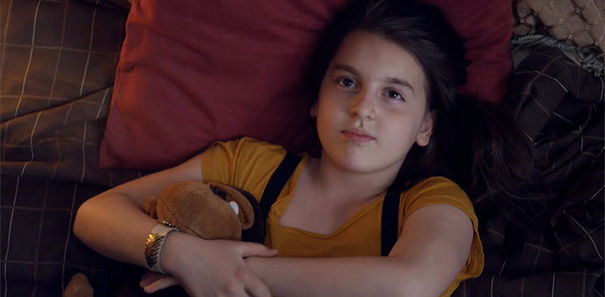The Big Problem of the Little Room
Raffi Movsisyan of the 2013 Talent Press Sarajevo reviews Barbara Vekarić’s 15-minute film MY! MY! MY LITTLE ROOM!

MY! MY! MY LITTLE ROOM! by Barbara Vekarić
During the 19th Sarajevo International Film Festival, the "Sarajevo City of Film" project presented three short films, including the British Council prize-winner: director Barbara Vekarić's MY! MY! MY LITTLE ROOM! Barbara Vekarić is also the author of the script. The film is about a Bosnian family who lives in a small apartment in Sarajevo.
The family, which consists of three children and their parents, hardly fits into their apartment. They sleep in the same room and they do not have their own space. They are forced to adjust their every movement to those of their other family members. The family's eldest daughter (Ena Kurtalic) is going off to college. She is the only one who has a private room. Her departure is a source of great joy for the younger brother (Ismir Gagula) and sister (Larisa Gagula), who begin to argue about who is to take the private room.
At its beginning, the film gives the impression that it aims to reveal serious social problems, but this is never explored because the narrative line does not really have continuation. Although the story is quite unique, and the little girl's desire to have her own space takes the audience's heart at once, nevertheless the director fails to create a movie with individuality. It seems that the director has done everything possible in order to convey the story, and yet the story's cinematographic reprinting does not succeed. This 15-minute film breaks apart in several places.
In the first part, the burden of the whole family is on the mother (Gordana Boban), who listens to and is subjective to all family members, including the father (Izudin Bajrović). Gradually, the mother's position decreases – in the second part her character simply disappears, leaving many questions. The father, who has a more passive role, does not seem to care about family life or his children's problems; he is always reading newspapers or watching TV. Then, in the second part of the film, positive signs begin to appear. The father becomes the little girl's dream-caretaker and does everything he can to ensure his daughter gains her own room. Such drastic changes in the evolution of the father and mother figures are both unnatural and ungrounded. After the eldest daughter leaves, the family gains gender equilibrium: mother and daughter, father and son. It is hard to say whether the father's image in the second part of the film was supposed to explore that equality or shift from matriarchy to patriarchy.
The director did not manage to avoid clichés – it can be said that this film is spiced by clichés – which are especially felt in several narrative lines, such as the scene where a neighbour complains about the children's noise. The director does not show any originality here; the neighbour character is depicted in a way similar to such portrayals as those found in several American popcorn comedies.
Generally, this film has a comedic narrative line, even though there is no particular originality. The director seems to do everything – and spares no effort – in order to provoke the audience's laughter. The choice of actors is also questionable. They are too theatrical and are sometimes unconvincing in their performances. Indeed, the image of the mother, with its ungrounded aggressiveness, is inconclusive because of her unnatural performance.
Interestingly, most of the films in this category struggled to clearly communicate and transport their stories, ideas and problems. MY! MY! MY LITTLE ROOM! is a film where the synopsis provided a good basis. But, unfortunately, the cinematographic styles of the other films were much more solid and convincing compared to Barbara Vekarić's film. Sadly, the director was unable to properly film anything equivalent to a rich story of remarkable drama and conflict.

